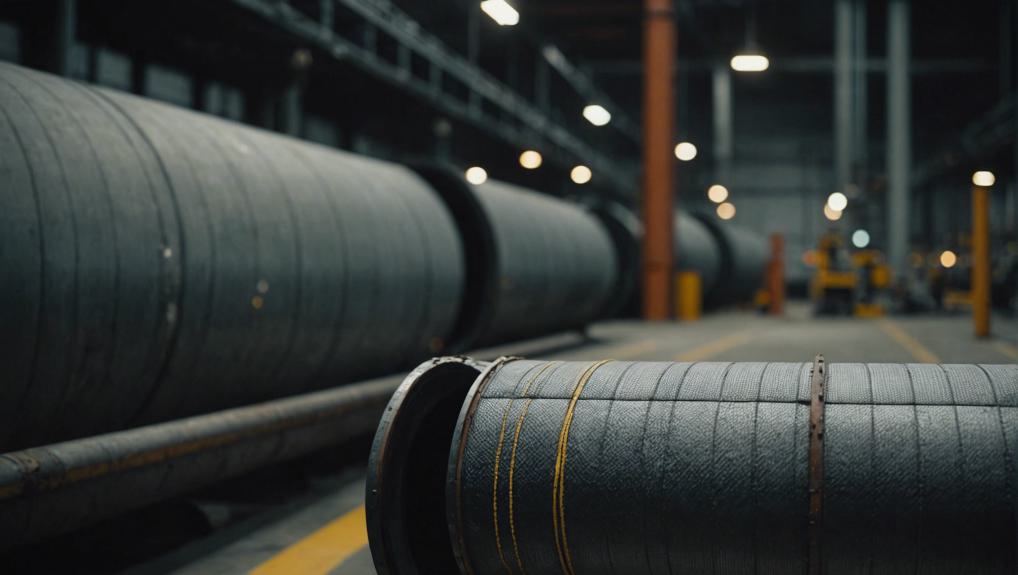
When you're dealing with fabric expansion joints, durability isn't just a bonus; it's a necessity. If you're choosing materials, always consider how they'll stand up to your specific environmental conditions—this could mean opting for neoprene in chemically aggressive settings or fiberglass for high-temperature applications. But how do you guarantee that these materials actually live up to their potential in real-world applications? And what specific maintenance routines can greatly extend the life of your joints? There's more to explore on guaranteeing the longevity and efficiency of these critical components, including some perhaps surprising insights on installation techniques.
Selecting the Right Materials
Choosing the right materials is crucial to guaranteeing the durability and effectiveness of your fabric expansion joints. You've got to take into account the specific requirements of your system, including temperature, pressure, and chemical exposures. These factors greatly influence the material choice to ensure long life and peak performance.
Start by evaluating the temperature extremes that the joints will face. If they're exposed to high temperatures, you'll need materials like fiberglass or silica fabrics. These can withstand intense heat without degrading. For lower temperatures, materials such as neoprene or EPDM provide adequate resistance and flexibility.
Next, ponder the chemical environment. If your joints are exposed to oils, acids, or solvents, you'll need chemically resistant materials like PTFE or Viton. These materials resist swelling and cracking, maintaining their integrity in harsh chemical conditions.
Pressure is another critical factor. Higher pressures require stronger and more robust materials that can handle the stress without rupturing. Reinforced fabrics or composites might be necessary to cope with these conditions.
Regular Inspection and Maintenance
Regular inspection and maintenance are essential to ensure that your fabric expansion joints stay in peak condition. You've got to understand that even the best materials degrade over time, and without a keen eye, minor issues can escalate into costly repairs.
To help you keep track, here's a handy checklist in table format. This guide will make it easier for you to remember what to look out for during inspections.
| Check Item | Action/Check For |
|---|---|
| Visual Inspection | Signs of wear, tear, or material fatigue |
| Hardware Integrity | Loosening bolts, corrosion, or damage |
| Environmental Conditions | Excessive moisture or heat exposure |
| Documentation Review | Update maintenance logs and compliance |
During these checks, you're not just looking for current problems but also for potential future issues that could harm the joint's performance. For instance, excessive moisture might not have caused damage yet, but it's a ticking time bomb. Keep your documentation updated; it's your first line of defense in tracking changes and managing your maintenance schedule effectively. Regularly updating this log helps in understanding the longevity and recurring issues with the joints, ensuring that you're never caught off guard.
Proper Installation Techniques
After guaranteeing your fabric expansion joints are well-maintained, it's important to focus on proper installation techniques to maximize their effectiveness. You'll want to start by carefully reviewing the manufacturer's guidelines. Each type of joint may have specific requirements or steps that are vital for a successful installation.
Firstly, make certain the surface where you're installing the joint is clean and free from any debris or irregularities. A smooth surface helps in achieving a better seal, reducing the chances of leaks. It's also essential to verify that the joint aligns perfectly with the pipeline or ductwork. Misalignment can lead to increased stress on the fabric, potentially shortening its life.
Next, when securing the joint, don't over-tighten the fasteners. This can cause excessive pressure on the fabric, leading to tears or premature wear. Instead, follow the recommended torque settings provided by the manufacturer.
Lastly, after installation, it's wise to perform a thorough check to ensure everything is sealed correctly and functioning as it should. Look for any signs of bunching or pinching in the fabric, as these can be early indicators of future problems.
Conclusion
To maximize the durability of your fabric expansion joints, always choose materials that can withstand your specific environmental conditions.
Don't forget to implement a routine inspection and maintenance schedule to catch any issues early and guarantee peak performance.
Finally, make sure you're installing your joints correctly by strictly following the manufacturer's guidelines and conducting thorough checks post-installation.
By sticking to these practices, you'll extend the life and effectiveness of your fabric expansion joints greatly.
© Copyright 2024. All RIghts Reserved
